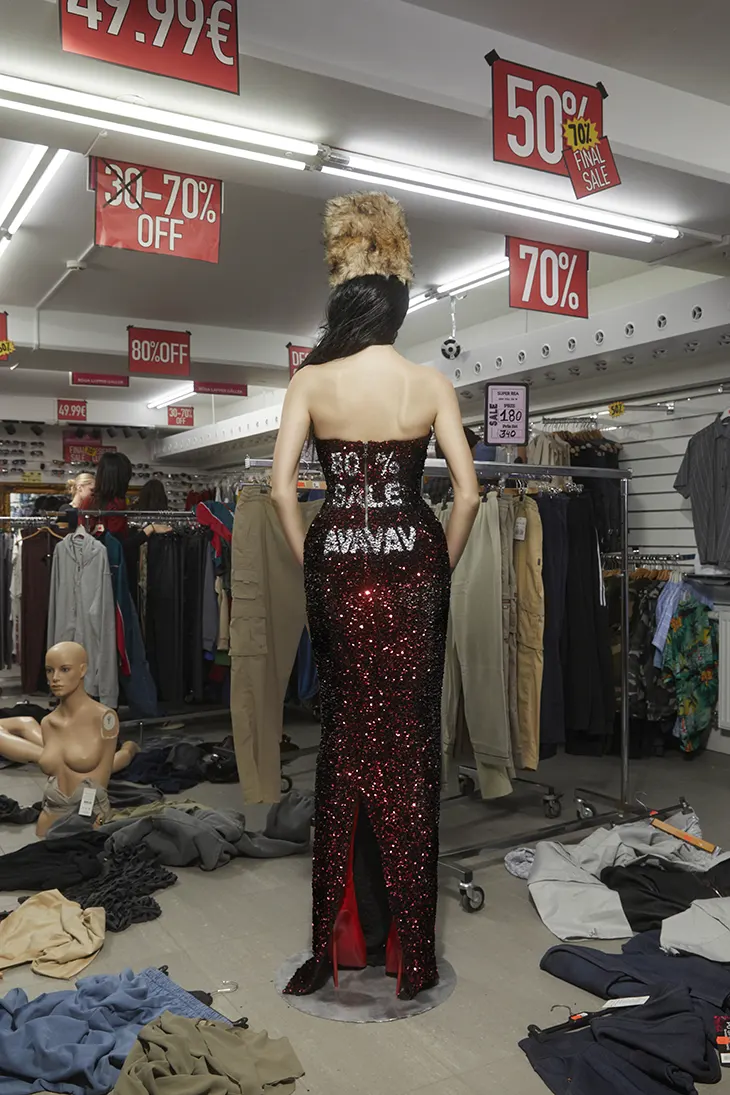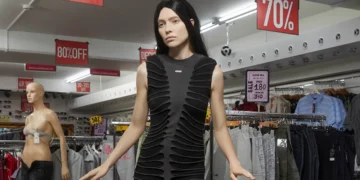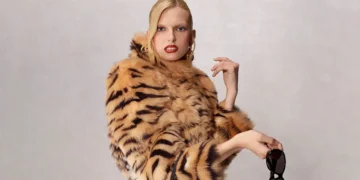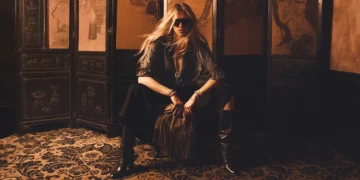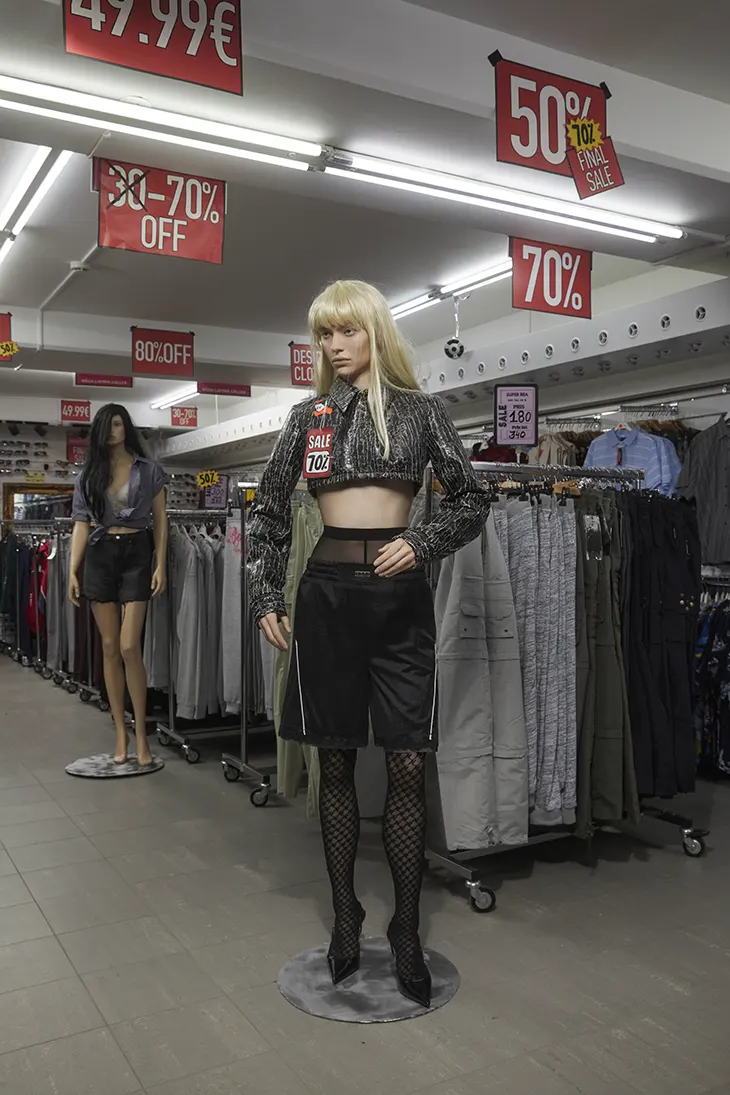
For Spring Summer 2026, Avavav bypassed the runway and placed its newest collection in a space designers dread: the outlet store. Titled “Soon on Sale,” the presentation is conceptual lookbook and film where mannequin-like models posed among racks plastered with discount tags, while frenzied shoppers raided the floor. It was bleak, absurd, and pointed, a satire of a system where ending up on the sale rack is treated as failure, even as the business model depends on it.
SPRING SUMMER 2026
The collection’s backdrop wasn’t just a joke; it was a critique of an industry where a 55 percent sell-through at full price counts as success, meaning nearly half of all product is designed to be discounted. That cycle pushes smaller independents into overproduction and burnout, chewing up creativity in the process. For Avavav’s Creative Director Beate Skonare Karlsson, the outlet store became both a symbol and a stage. “Without even noticing, I’ve caught myself following rules that weren’t built for small brands,” she admits, pointing to the paradox of investing in shows she can’t sustain and designing at speeds that drain joy from the process. By setting new designs against a backdrop of collapse, Karlsson highlights how fragile value has become.
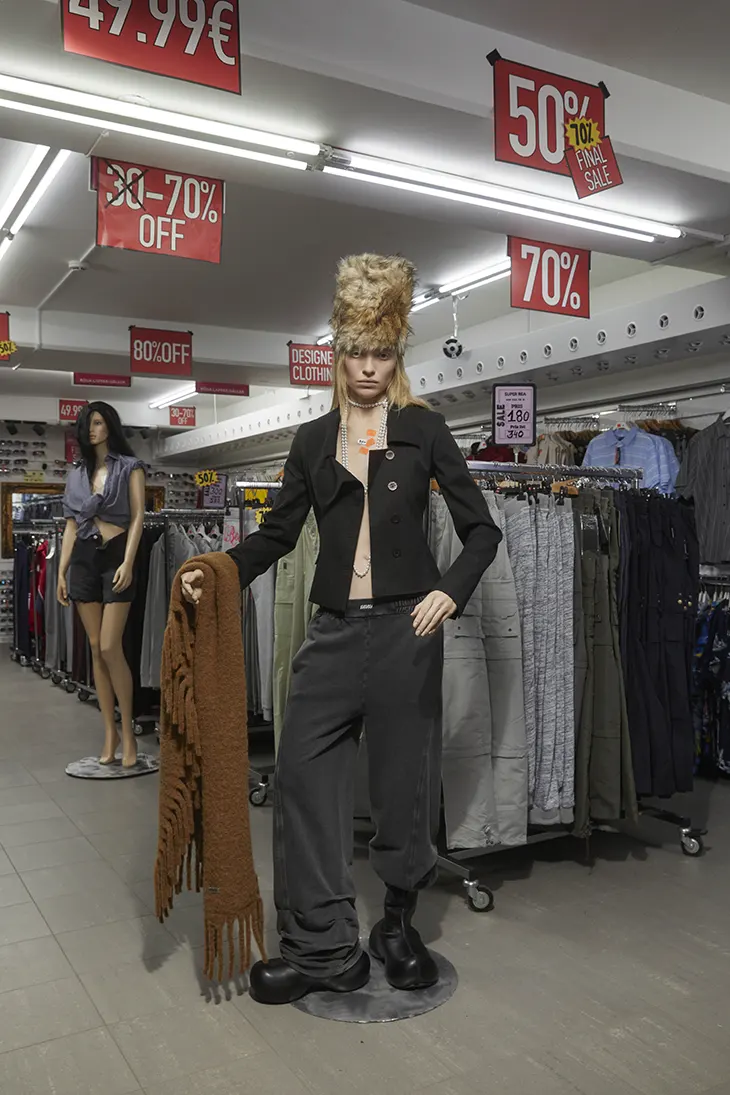
The clothes sharpened that irony. A red sequin dress sculpted to trace curves revealed “80% SALE” sprawled across the back, glamour undone by its own markdown. A heather-grey hoodie dress combined puffed sleeves and a circular skirt, an odd hybrid that turned casualwear into a sculptural statement. Signature smocked pants appeared exaggerated, pooling like liquid at the ankles, while faux-fur top hats and fox tails added eccentric energy to streetwear silhouettes. Prints resembling rib-cages, first introduced last season, were repeated across crochet, hoodies, shirts, and a skeletal maxi dress. The refusal to reinvent them was deliberate: a rejection of the industry’s addiction to “newness.”
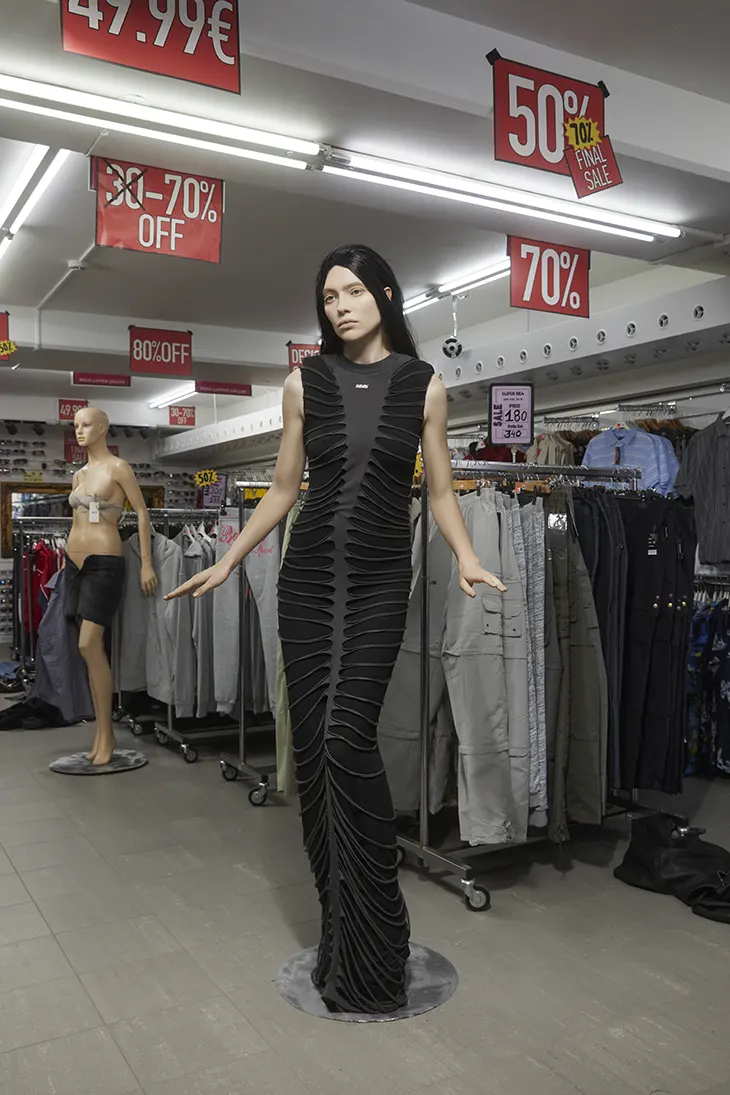
Shoes delivered a surreal punch. The Luge heel, with a 22-centimeter spike, exaggerated performance design into parody, while the Moonrubber evolved into a cosmic boot seemingly destined for outer space. Both carried Avavav’s ability to turn functionality inside out, questioning where design ends and spectacle begins.
By skipping the runway altogether, Avavav doubled down on its message. The brand refused to play into a cycle of unsustainable spectacle, instead framing its collection inside a space already coded as failure. In doing so, Karlsson turned exhaustion into commentary, channeling humor and critique into designs that speak louder than any runway theatrics.
View this post on Instagram
“Soon on Sale” was a reminder that while fashion may fear the clearance rack, it also depends on it. Avavav staged that contradiction with clarity: sad yet ridiculous, serious yet unserious. Set in fashion’s imagined ICU, the brand offered a diagnosis of an industry bent on speed and discount culture, and a reminder that vision, unlike product, cannot be marked down.
